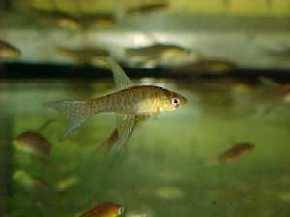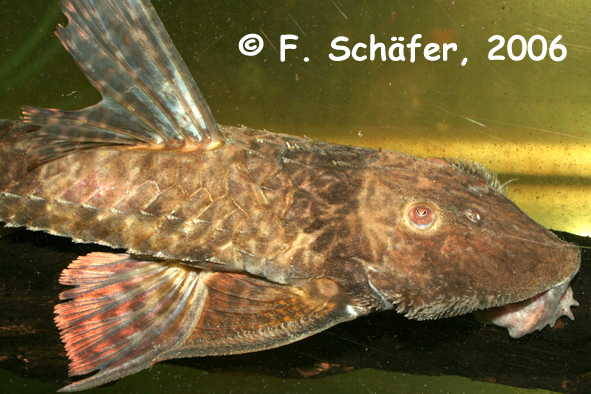Some time ago we could import Mastacembelus greshoffi from the Congo. Here we have a spiny eel getting approximately 35 cm long, which occurs over rocky bottoms in rivers and lakes, also in rapids. Spiny eels are intelligent fish, they show a multiplicity of interesting behaviours. They also can become amazing tame and eat then literally from the hand of their caregiver. Best meaty food is eaten and rather plenty of it. They like mosquito larvae, worms and also now and then a small fish. Therefore not too small tank mates should be selected for their socialization in a community tank. A complete covering of the aquarium is important, since spiny eels rank among the “escapee kings” under the aquarium fish. With a little luck and smartness the breeding of this species should be possible, some relatives have already successfully be bred in aquaria.(Photo F. Schäfer, Text K. Diehl)
| Angaben zum Tier | |
|---|---|
| Herkunft | Kongo, Cingo River |





















































 In the last years some quite difficult to classify new species of characins arrived from Paraguay. Usually they belong to the genera Creagrutus, Hemibrycon and Piabarchus. As a common characteristic a high swimming activity can be called for all species of this relationship. They need thus tanks, with a large free swimming area. Thus long stretched aquaria are ideal for them. There a strong current can be produced with the help of a centrifugal pump, in which they can organize their “swimming contests”. They like to jump, a complete cover helps to avoid losses. According to their origin they do not like it durably hot, an unheated aquarium is very pleasant and preserve the purse of the owner. They do not place increased requirements on their nutrition, living and frosted food are preferred, but they can also be fed with flake food.(Photo F. Schäfer, Text K. Diehl)
In the last years some quite difficult to classify new species of characins arrived from Paraguay. Usually they belong to the genera Creagrutus, Hemibrycon and Piabarchus. As a common characteristic a high swimming activity can be called for all species of this relationship. They need thus tanks, with a large free swimming area. Thus long stretched aquaria are ideal for them. There a strong current can be produced with the help of a centrifugal pump, in which they can organize their “swimming contests”. They like to jump, a complete cover helps to avoid losses. According to their origin they do not like it durably hot, an unheated aquarium is very pleasant and preserve the purse of the owner. They do not place increased requirements on their nutrition, living and frosted food are preferred, but they can also be fed with flake food.(Photo F. Schäfer, Text K. Diehl)





































